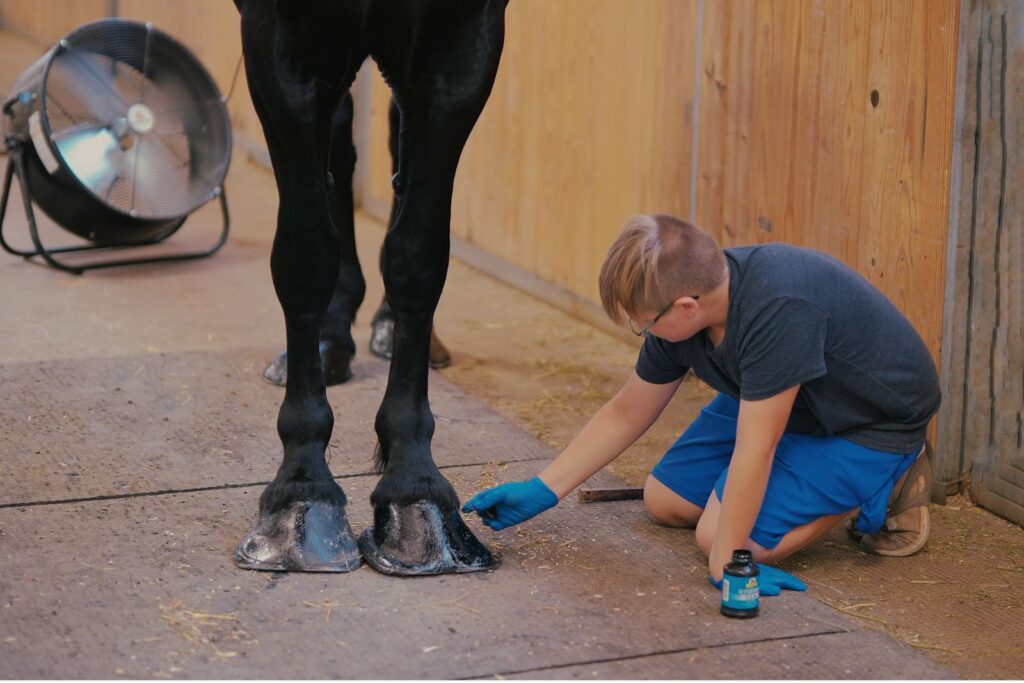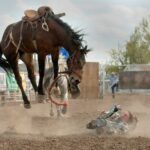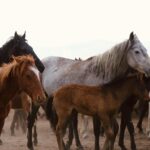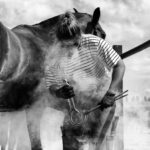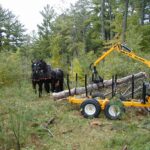Thrush is one of the most common hoof conditions affecting horses, characterized by a bacterial infection that thrives in moist, anaerobic environments. This unpleasant condition typically develops in the sulci (grooves) alongside the frog of the horse’s hoof, causing a distinctive foul odor, black discharge, and potentially painful deterioration of hoof tissues. For horse owners and caretakers, understanding how to identify, treat, and prevent thrush is essential to maintaining optimal equine hoof health. Left untreated, thrush can progress from a minor nuisance to a serious condition that impacts your horse’s soundness and overall well-being. The good news is that with proper knowledge and consistent care, thrush can be effectively managed and prevented.
Understanding What Thrush Is
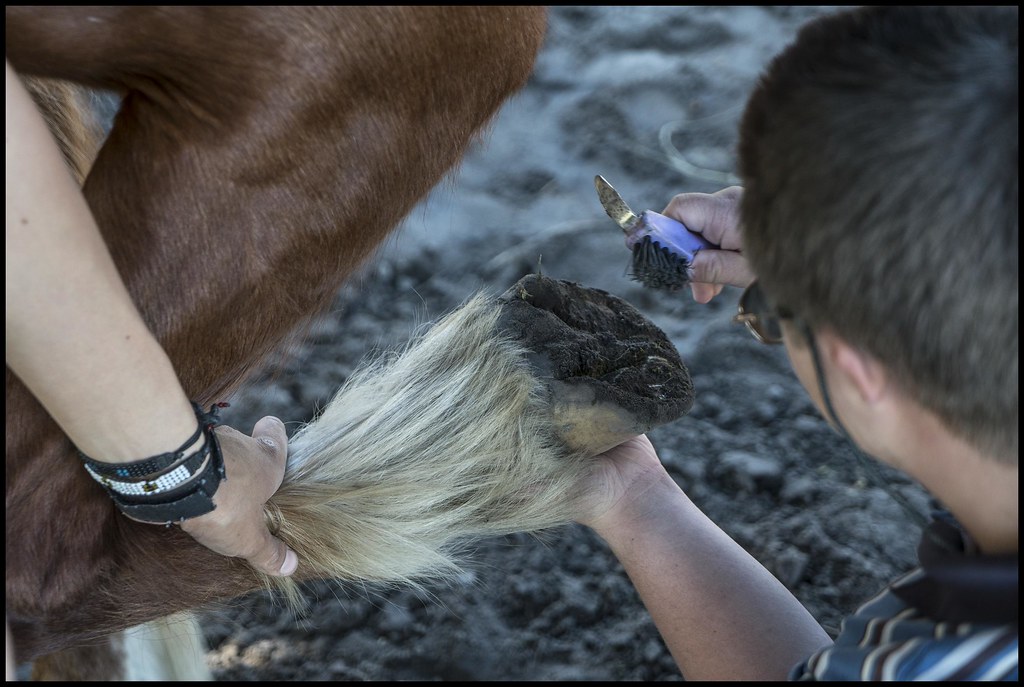
Thrush is a bacterial infection that primarily affects the frog of a horse’s hoof, particularly in the central and lateral sulci (grooves). The main culprit is typically Fusobacterium necrophorum, although other bacteria and fungi can also contribute to the infection. These microorganisms thrive in dark, moist, oxygen-deprived environments, making poorly maintained hooves an ideal breeding ground. As the infection progresses, it breaks down the hoof tissue, leading to a characteristic black, foul-smelling discharge that resembles tar. In severe cases, thrush can penetrate deeper tissues, causing lameness and significant discomfort for the affected horse.
Recognizing the Signs of Thrush
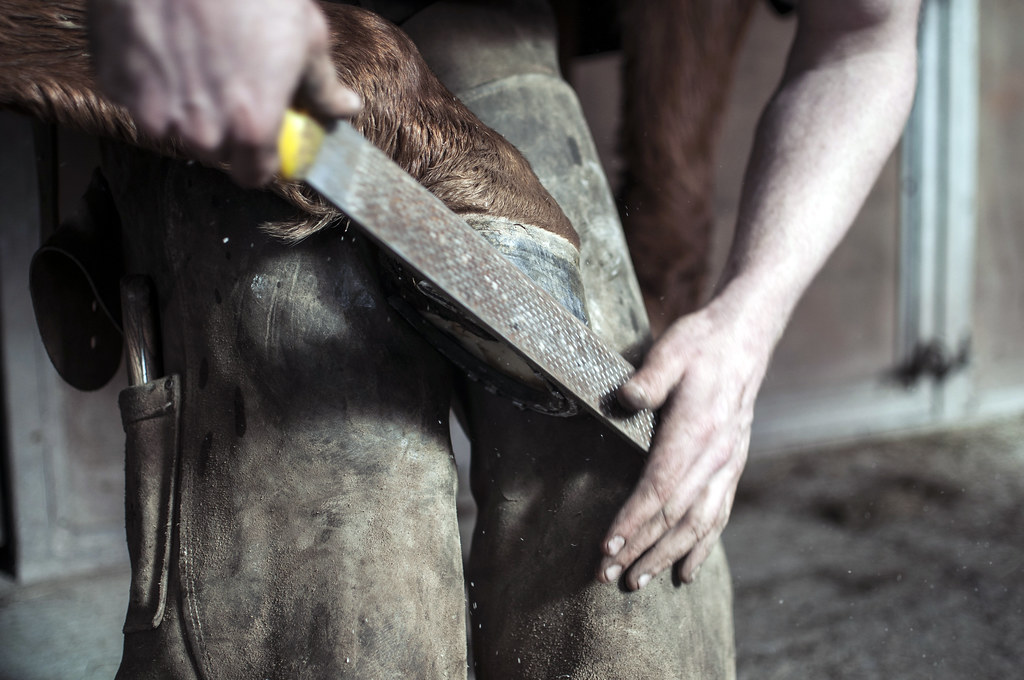
Early detection of thrush is crucial for prompt treatment and preventing the condition from worsening. The most telltale sign is a strong, pungent odor emanating from the hoof, often described as similar to rotten dairy products. Visual indicators include a black, necrotic material in the frog’s sulci, which may be accompanied by a dark discharge when pressure is applied to the affected areas. The frog tissue might appear ragged, with portions potentially sloughing off, and in advanced cases, the horse may show sensitivity when the affected areas are touched or pressed. Some horses with severe thrush will demonstrate lameness or an altered gait as they attempt to reduce pressure on painful areas of the hoof.
Common Causes of Thrush
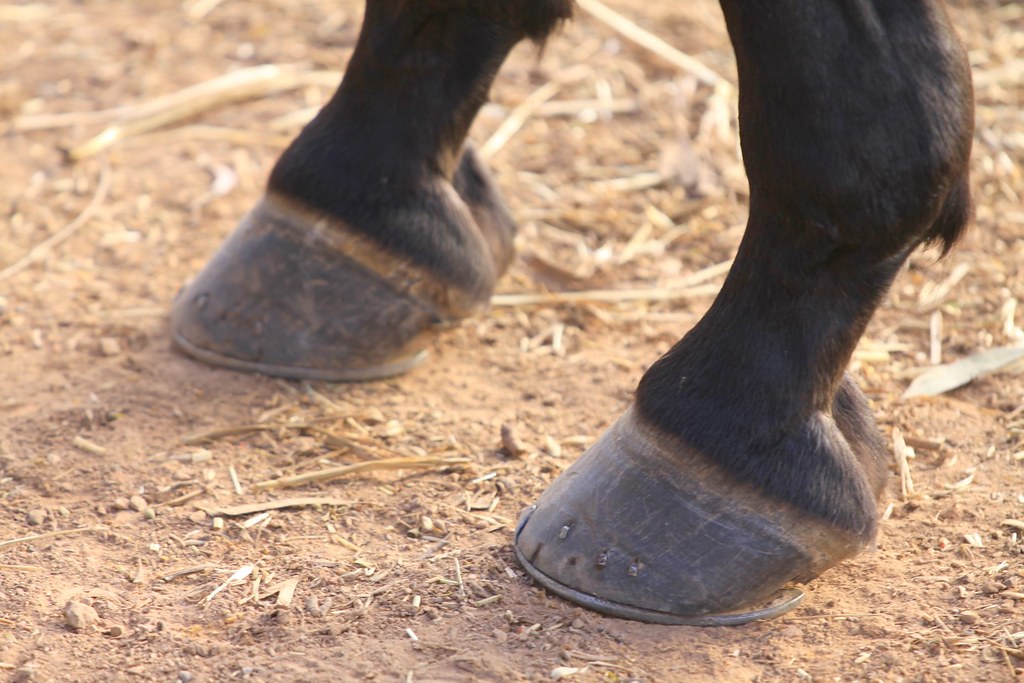
Poor hoof hygiene is the primary contributor to thrush development, with horses kept in wet, muddy conditions or unclean stalls being particularly susceptible. Inadequate or infrequent hoof cleaning allows debris and manure to accumulate in the sulci, creating an ideal environment for bacterial growth. Improper trimming can create deep crevices where bacteria thrive, while conformational issues may lead to poor frog development or deep sulci that are difficult to keep clean. Environmental factors play a significant role as well, with horses living in humid climates or experiencing prolonged wet conditions facing increased risk of developing thrush. Additionally, horses with limited exercise may have reduced natural cleaning of the hooves through movement, further contributing to thrush development.
The Role of Regular Hoof Care
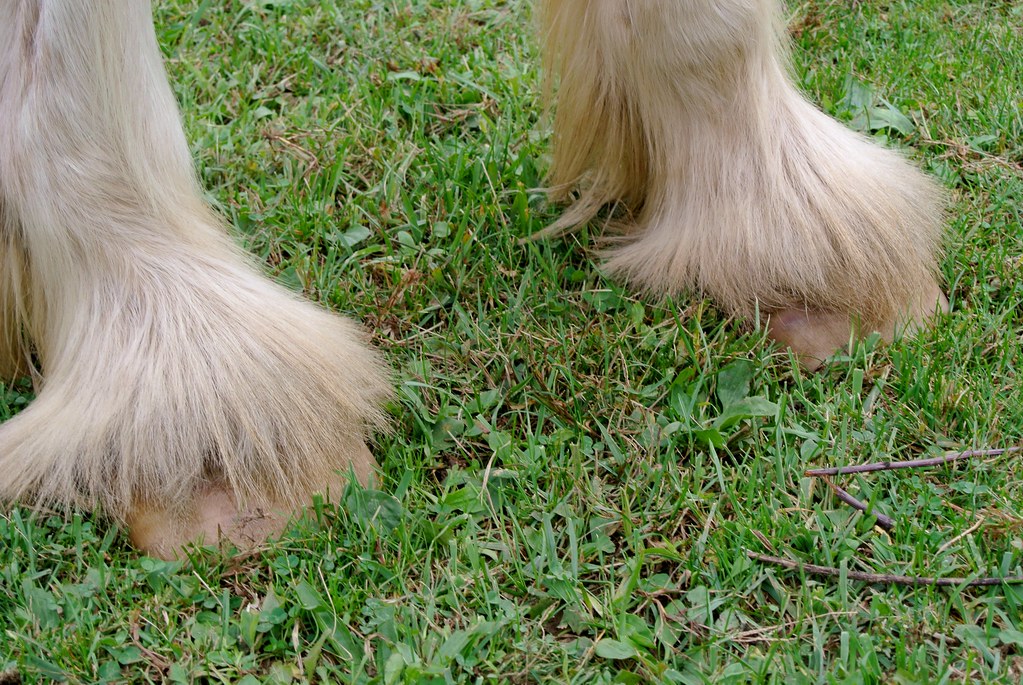
Consistent, quality hoof care is your first line of defense against thrush and is essential for both prevention and management. Professional farrier visits should be scheduled every 4-8 weeks, depending on your horse’s individual hoof growth and needs. A skilled farrier will properly trim the hoof, ensuring that the frog is healthy and that there are no deep crevices where thrush-causing bacteria can hide and multiply. Regular trimming also promotes proper blood circulation within the hoof, contributing to overall hoof health and natural resistance to infection. Between farrier visits, horse owners should implement a routine of daily hoof picking and inspection, which not only removes debris but also provides an opportunity to catch the early signs of thrush before they develop into more serious problems.
Daily Cleaning Practices
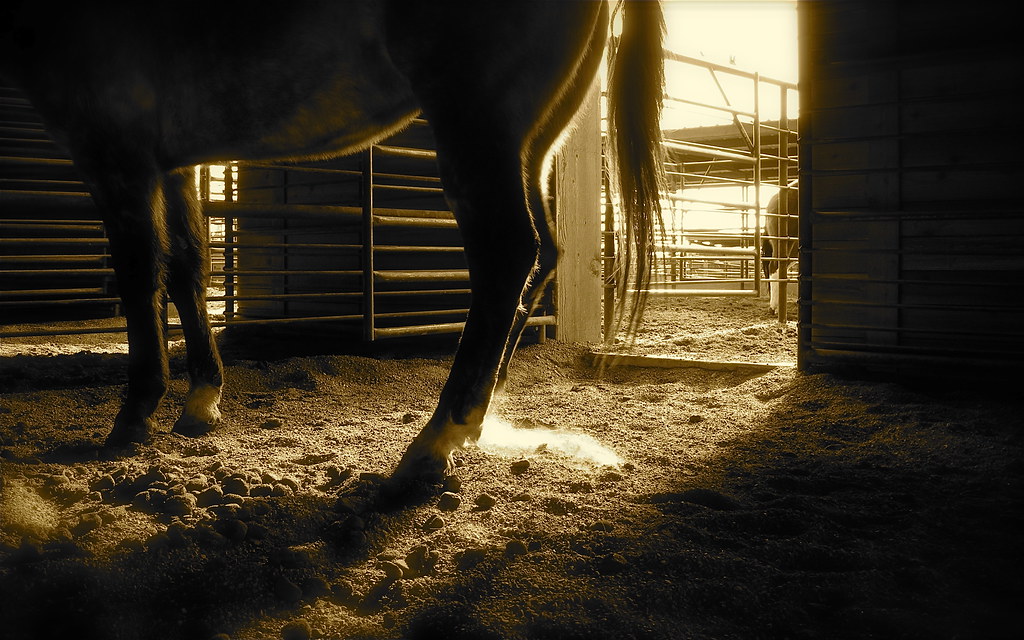
Establishing a consistent daily hoof cleaning routine is crucial in preventing thrush and monitoring hoof health. Start by carefully lifting each hoof and thoroughly removing all debris from the sole, frog, and sulci using a hoof pick, working from heel to toe to avoid injury. Pay special attention to the central and lateral sulci of the frog where thrush commonly develops, ensuring these areas are completely cleared of mud, manure, and other material. After picking, visual inspection of each hoof can help identify early signs of thrush or other issues requiring attention. For added protection, particularly in wet conditions, consider briefly scrubbing the frog and sulci with a stiff brush and mild soap solution, then thoroughly drying the hoof before applying preventative products if necessary. This daily ritual not only keeps hooves cleaner but also accustoms horses to having their feet handled, making treatment easier if problems do arise.
Creating an Optimal Living Environment
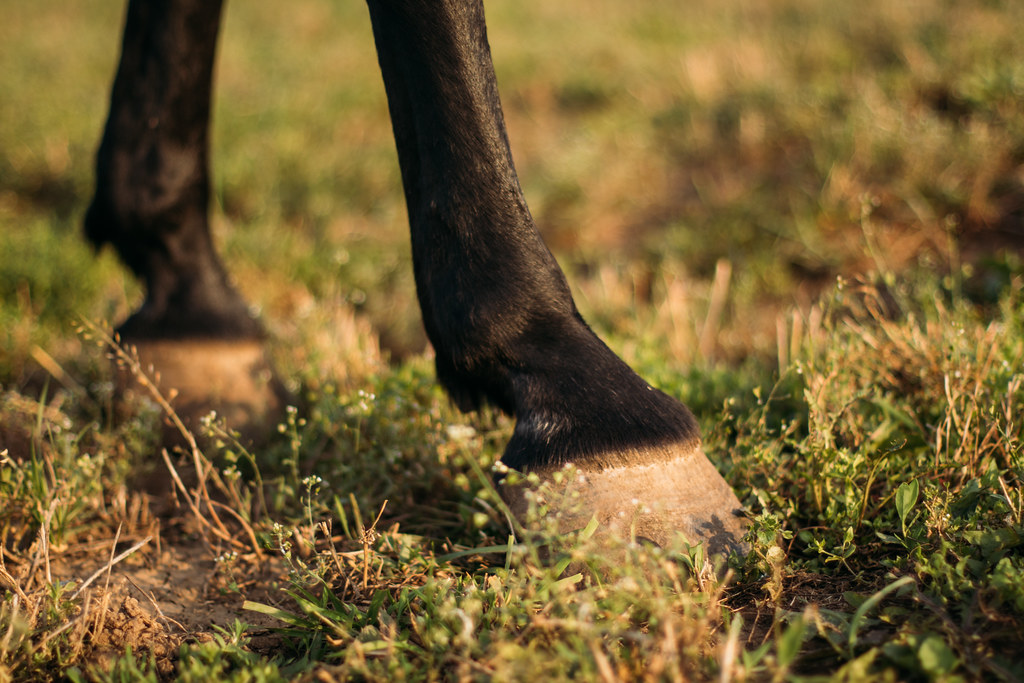
The conditions in which your horse lives significantly impact hoof health and thrush susceptibility. Stalls should be cleaned at least once daily, with all manure and wet bedding removed to reduce moisture and bacterial load in the horse’s environment. Proper drainage in paddocks and turnout areas is essential, with efforts made to eliminate standing water and mud where possible, which might include strategic grading, installing French drains, or creating designated dry lots with crushed stone or other materials. For areas that inevitably become muddy during wet seasons, consider establishing sacrifice areas that can be managed more intensively to protect the rest of the pasture. Providing access to dry standing areas at all times gives horses the ability to escape constant moisture, which is particularly important during rainy periods or in naturally humid climates. Well-designed shelter options that horses willingly use in inclement weather further contribute to maintaining drier hooves and reducing thrush risk.
Treating Mild Cases of Thrush
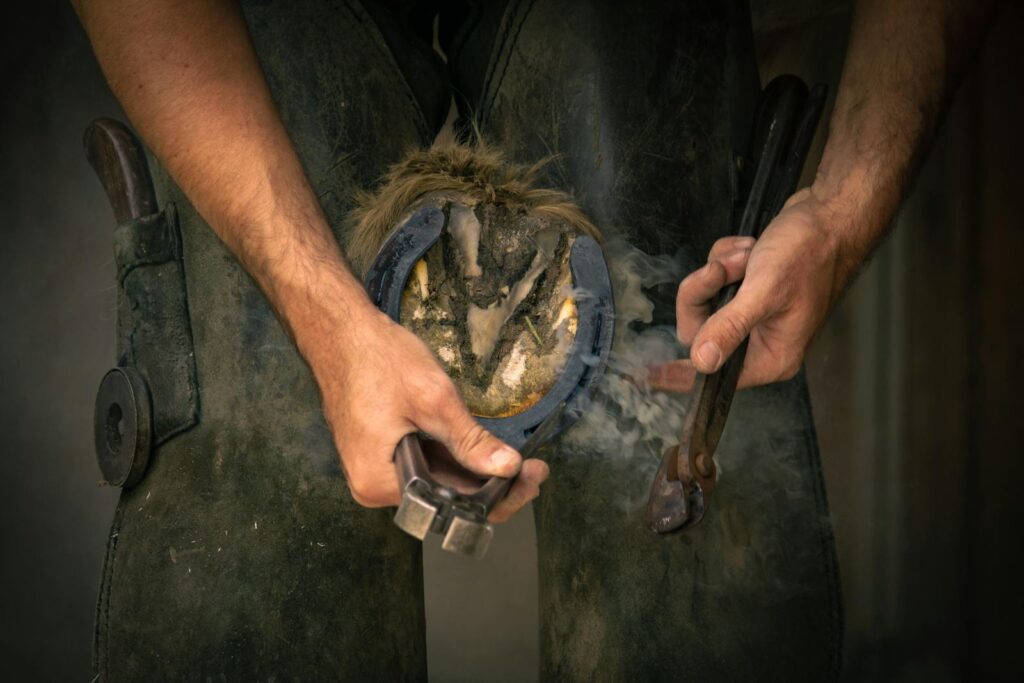
When thrush is detected in its early stages, prompt action can often resolve the issue relatively quickly and easily. Begin by thoroughly cleaning the affected hoof, removing all debris and necrotic material from the frog and sulci using a hoof pick and brush. Once cleaned, apply a commercial thrush treatment product containing ingredients such as copper sulfate, iodine, or chlorine dioxide directly to the affected areas, being careful to follow the product’s specific instructions for application frequency and safety precautions. Many horse owners find success with dedicated thrush remedies like Thrush Buster, Kopertox, or No Thrush, though simple solutions like diluted bleach (1:10 with water) can also be effective for mild cases. Consistent treatment is key – most cases require daily application for at least a week, even if improvement is noticeable sooner. Throughout treatment, maintain a clean, dry environment for your horse and continue regular hoof cleaning to support the healing process.
Addressing Severe Thrush Infections
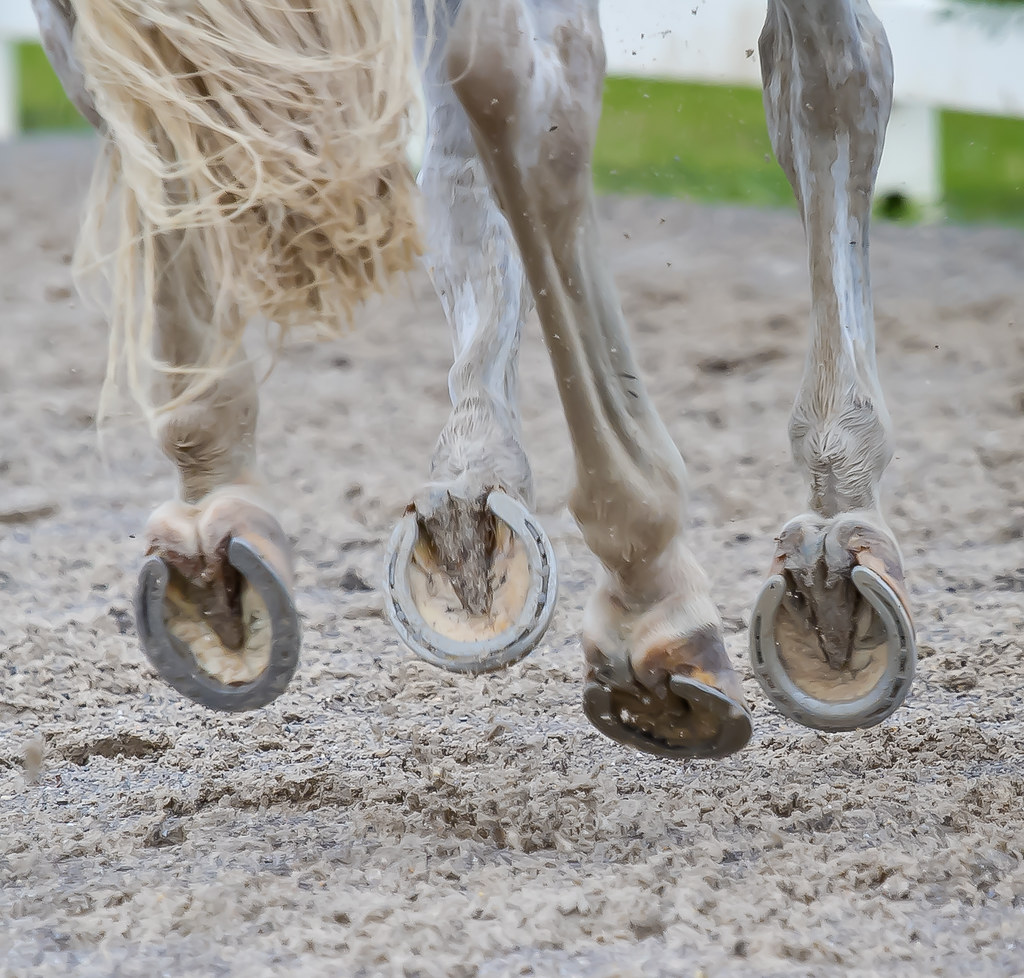
When thrush has progressed to an advanced stage, characterized by deep tissue involvement, pronounced lameness, or bleeding from the affected areas, veterinary intervention becomes necessary. A veterinarian can properly assess the extent of infection, potentially debride (remove) severely damaged tissue, and recommend appropriate treatment strategies based on the specific case. Treatment of severe thrush typically involves more aggressive antimicrobial therapy, possibly including prescription-strength medications or specialized preparations that can penetrate deeper into affected tissues. Your veterinarian may also recommend supportive care such as anti-inflammatory medications if the horse is experiencing significant pain. In such cases, environmental management becomes even more critical, with some horses benefiting from temporary stall rest with clean, dry bedding to minimize further contamination while healing occurs. Recovery from severe thrush may take several weeks, during which regular veterinary follow-ups help monitor progress and adjust treatment as needed.
Natural and Alternative Treatment Options

For horse owners seeking natural alternatives to commercial thrush treatments, several options have shown effectiveness when used consistently. Apple cider vinegar, applied directly to affected areas after thorough cleaning, creates an acidic environment inhospitable to thrush-causing bacteria. Tea tree oil, diluted with a carrier oil to prevent irritation, offers natural antimicrobial properties that can help combat infection when applied to affected hooves. Some horse owners report success with honey treatments, particularly medical-grade Manuka honey, which has recognized antibacterial properties and can be packed into sulci after cleaning. Diatomaceous earth can be dusted onto the frog and sole as a drying agent to help reduce moisture that contributes to thrush development. While these natural remedies may be effective for mild cases or prevention, it’s important to monitor their effectiveness closely and not delay proper veterinary care if the condition worsens or fails to improve.
The Importance of Nutrition in Hoof Health
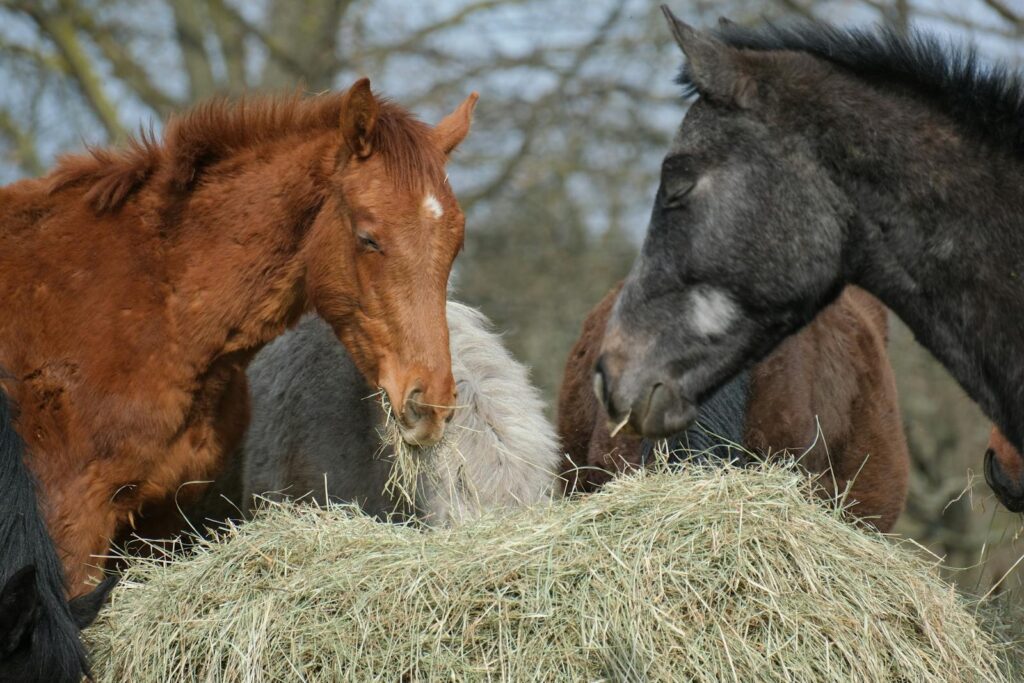
A well-balanced diet plays a crucial role in maintaining strong, resilient hooves that naturally resist thrush and other conditions. Adequate protein intake is essential for hoof growth and repair, as keratin (the primary component of hooves) is a protein-based structure. Biotin supplementation at levels of 15-20mg daily has been scientifically proven to improve hoof quality in many horses, promoting stronger hoof walls and healthier frog tissue. Other important nutrients for optimal hoof health include zinc, copper, and methionine, which support keratin production and structural integrity of hoof tissues. Omega-3 fatty acids contribute to the overall health of hoof tissues by supporting proper moisture balance and cellular function. For horses with persistent hoof issues, consultation with an equine nutritionist can help develop a customized feeding program that addresses specific nutritional needs for improved hoof quality and thrush resistance.
Exercise and Movement for Hoof Health

Regular exercise and movement are vital components of thrush prevention and overall hoof health maintenance. Active movement stimulates blood circulation within the hoof, delivering essential nutrients and oxygen while removing metabolic waste products. The natural expansion and contraction of the hoof during weight-bearing helps clean the frog sulci as the horse moves across varying terrain, particularly rougher surfaces. Horses confined to stalls or small paddocks miss out on this natural cleaning mechanism and may experience reduced hoof circulation, making them more susceptible to thrush and other hoof problems. Providing opportunities for regular turnout on properly maintained ground, trail riding on varied terrain, or even hand-walking on different surfaces can significantly improve hoof health and resilience. For horses that must have limited turnout due to other health concerns, consider implementing controlled exercise programs specifically designed to promote hoof circulation and strength.
Seasonal Considerations for Thrush Prevention
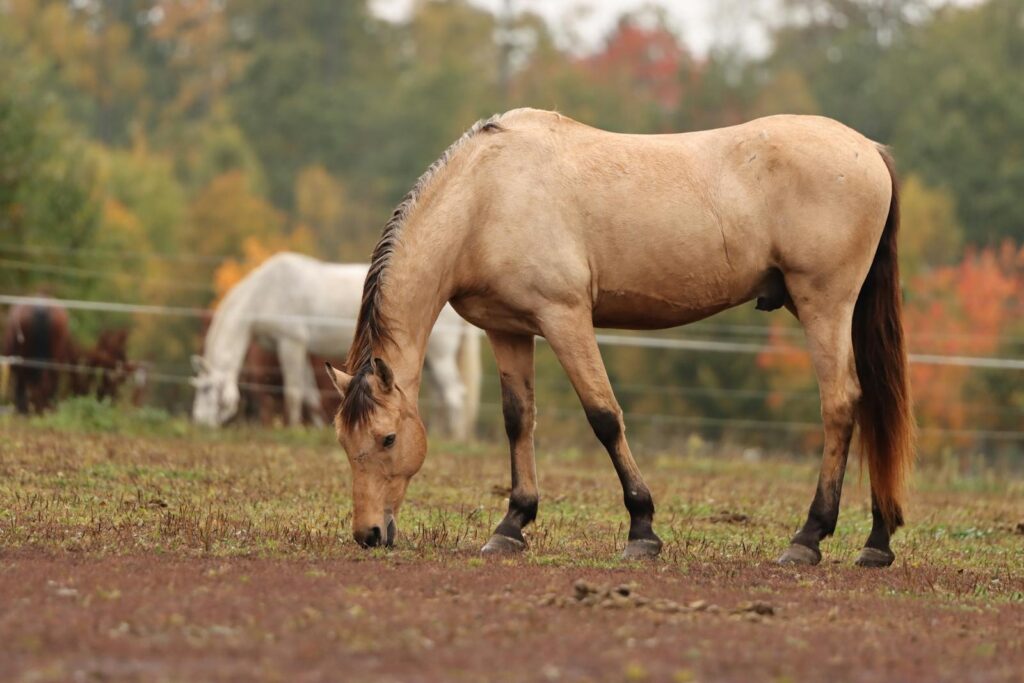
Different seasons present unique challenges for thrush prevention, requiring adjusted management strategies throughout the year. During wet winter and spring months, increased environmental moisture necessitates more frequent hoof cleaning and inspection, potentially daily application of preventative thrush treatments, and strategic use of well-drained turnout areas. Hot, humid summer conditions create ideal bacterial growth environments, making consistent hoof cleaning essential even when hooves appear dry on the surface. Fall season brings its own challenges with decomposing leaves and vegetation creating acidic, moisture-retaining ground conditions that can contribute to thrush development. During seasonal transitions, horses’ environments and hoof care routines should be adjusted proactively rather than reactively, with particular attention to changing ground conditions and moisture levels. Some owners find it beneficial to implement a rotating schedule of preventative products across seasons, which may help prevent bacterial resistance while addressing seasonal-specific challenges to hoof health.
When to Consult Professionals

While many cases of thrush can be successfully managed by knowledgeable horse owners, certain situations warrant professional intervention. Contact your veterinarian immediately if you observe lameness associated with the thrush infection, as this indicates deeper tissue involvement requiring professional assessment. If the affected hoof shows signs of bleeding, significant pain upon pressure, or you notice a foul odor that persists despite a week of consistent treatment, these are indications that the infection may be more severe than initially thought. Cases that don’t respond to standard treatments within 7-10 days should be evaluated by a veterinarian to rule out complications or misdiagnosis. Your farrier should be consulted about any thrush issues prior to scheduled trimming, as they can provide valuable insights on conformational factors contributing to the problem and may adjust trimming techniques to support recovery. Establishing a collaborative relationship between you, your veterinarian, and your farrier creates the most effective team for addressing persistent or severe thrush cases.
Preventing Recurrence After Treatment

Once thrush has been successfully treated, implementing a comprehensive prevention strategy is essential to avoid recurrence of this troublesome condition. Establish a regular schedule for environmental management, including frequent mucking of stalls and strategic rotation of turnout areas to prevent excessive mud accumulation and moisture exposure. Develop a consistent hoof care routine that includes daily cleaning and inspection, with particular attention to thoroughly cleaning and drying the central and lateral sulci where thrush typically begins. Consider applying preventative thrush products weekly, especially during wet seasons or if your horse has a history of recurrent thrush issues. Address any conformational factors that may predispose your horse to thrush, which might involve corrective trimming, specialized shoeing, or management strategies tailored to your horse’s specific needs. Remember that prevention is always easier and less costly than treatment, making consistent preventative care a worthwhile investment in your horse’s comfort and soundness.
Conclusion
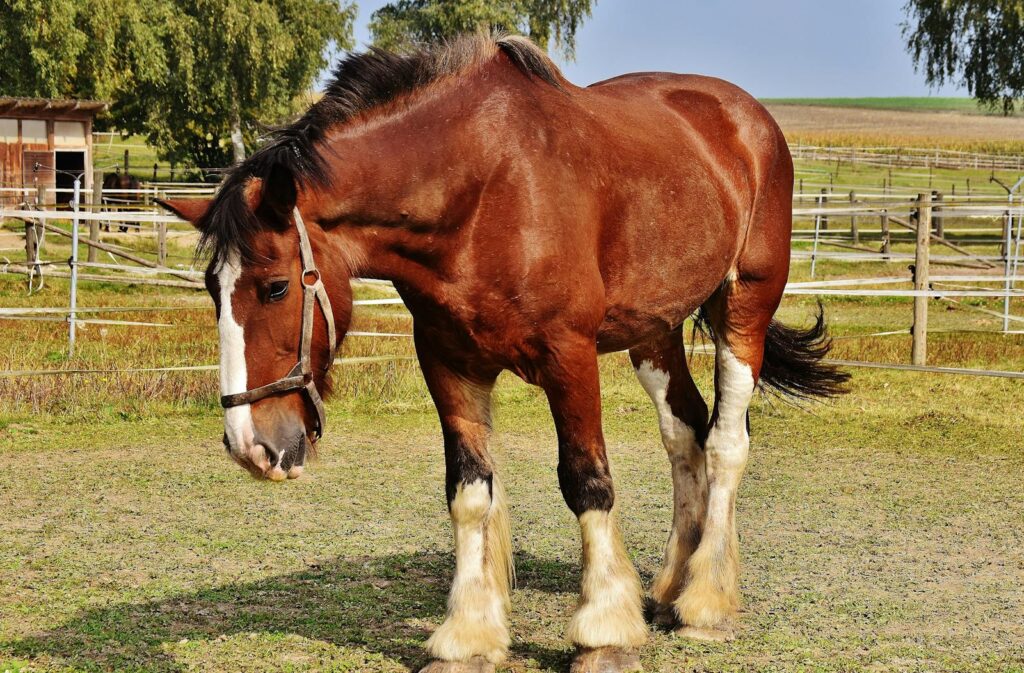
Thrush in horse hooves represents a common but manageable challenge for equine caretakers. With vigilant attention to environmental conditions, consistent hoof cleaning practices, appropriate nutrition, and prompt intervention when problems arise, most cases can be effectively treated and prevented. The key to success lies in understanding that thrush prevention isn’t a single action but rather an integrated approach involving all aspects of horse care. By implementing the strategies outlined in this article and working collaboratively with equine health professionals, horse owners can maintain healthy, thrush-free hooves and ensure their equine partners remain comfortable and sound. Remember that each horse is an individual with unique needs and susceptibilities, so observation, adaptability, and consistency in care are your most powerful tools in the battle against thrush.

